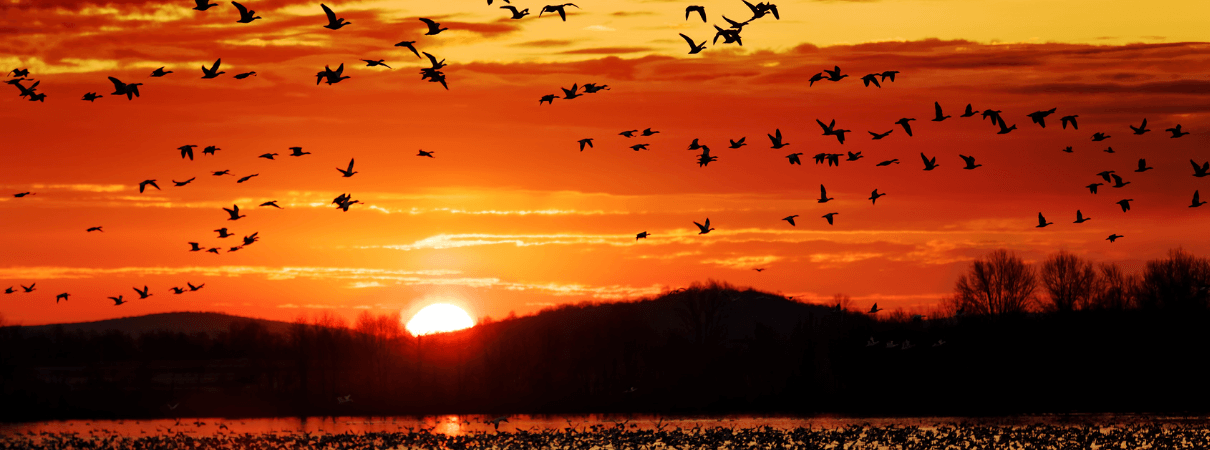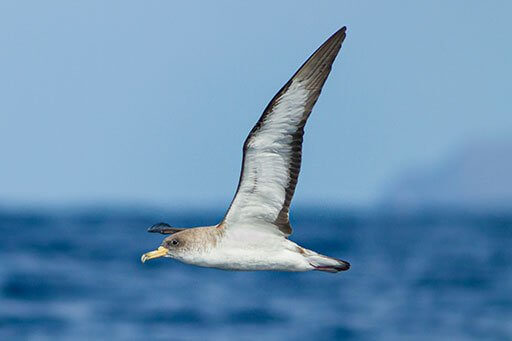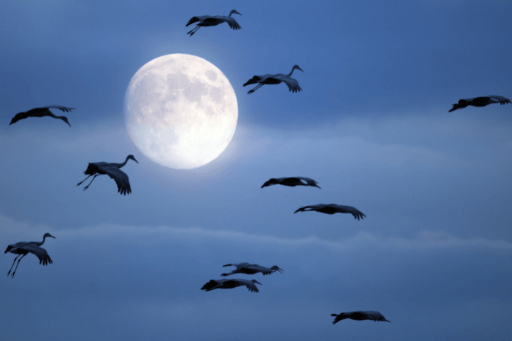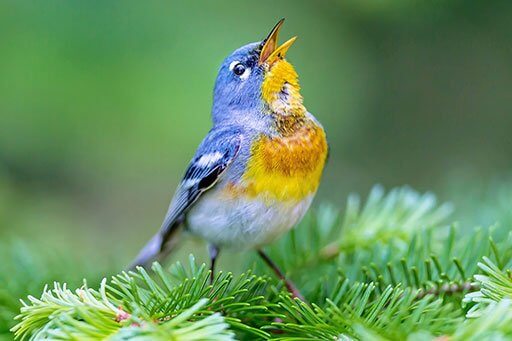How Do Birds Navigate During Migration?
Bird migration is one of the most amazing phenomena in the natural world.
Many birds travel from the Northern to the Southern Hemisphere and back every year, following food resources and friendly climates. But how do seasonal migrants — and other birds such as seabirds undertaking lengthy oceanic foraging trips — find their way?

Young birds from widely ranging species seem to hatch with genetic programming that gives them a basic idea of where they should head when the season changes, and many make their first migration without their parents to help. But as they fine-tune their routes via experience, they rely on a combination of techniques to navigate. The most essential are listed below.
Familiar Sights and Smells Help During Bird Migration
One of the simplest ways a bird can make sure it's on the right track — at least while migrating over land on a clear day — is to watch for familiar landmarks below. Some ornithologists believe that day-migrating birds keep an eye out for features such as rivers and mountain ranges, using them to plot a course. There's even evidence that night-migrating birds can fine-tune their course based on rivers as they near their destinations.

But what about birds that don't have landmarks with which to navigate? Seabirds, for example, sometimes fly long distances over the featureless ocean. The remarkable answer is that some birds can follow their noses.
For a 2017 study, researchers temporarily blocked the sense of smell of a group of seabirds called Scopoli's Shearwaters by washing their nasal passages with an otherwise harmless chemical called zinc sulfate. Then, they tracked the birds with GPS devices while they foraged off the coast of Spain, comparing them with shearwaters that could still smell. The test group continued to navigate effectively over land — but when they headed out to sea, they became disoriented, suggesting that scents fill in the gaps when landmarks aren't available.
The Sun and Stars Guide Migrating Birds
Not all birds have a great sense of smell — and if you migrate at night (as many songbirds do), landmarks might not help you much, either. When this is the case, it's time to turn to celestial navigation.
In the 1960s, a father-and-son scientist team studying bird migration, John and Stephen Emlen, invented a clever method of studying whether birds oriented themselves using the stars. They placed captive birds experiencing seasonal “migratory restlessness” in small cages with ink pads at their bottoms and lined the cages with paper funnels they dubbed “Emlen funnels.” As trapped birds attempted to take flight, their feet left ink marks on the paper-lined sides of the cage. To test whether the birds picked their direction based on the stars overhead, the Emlens placed caged Indigo Buntings in a planetarium where they could manipulate the location of celestial bodies. When they rotated the planetarium “sky” so that “north” appeared in a different direction, the birds changed course accordingly, as indicated by their feet marks on the funnels — aligning themselves by the stars' locations.

The rising and setting sun, of course, provide other major cues for direction-finding, and many studies have shown that birds use these markers as well. For example, a 2001 study used radar to track the changing trajectories of shorebirds heading south from the Arctic and found that the only way to explain certain quirks of their routes was to posit that they were following a “sun compass,” with their direction shifting slightly as their internal clocks lost sync with local time over the long distances they traveled.
Magnetic Fields, Quantum Physics, and Birds
It's not that hard to imagine finding your way by following a river, or the North Star, or even your nose. After all, we humans share the senses of sight and smell with birds. But bird migration also seems to rely on a sixth sense that we lack: the ability to feel Earth's magnetic field.
Experiments to test this ability by manipulating the magnetic fields around birds in a laboratory, which date back to the 1960s, have shown that birds alter their direction according to changes in these fields. The question is, how?
Some studies have claimed that tiny particles of a highly magnetic mineral called magnetite can be found in the upper bills of birds, including pigeons, helping them to navigate. Although this theory poses a potential answer, it remains controversial. Magnetite has since turned up in other locations in pigeons' bodies that don't seem as well-suited to be magnetic sensors. Similarly, the results of studies that have tried anesthetizing magnetite-containing areas to see how bird are affected have been inconsistent.

In recent years, an alternative hypothesis has emerged. It posits that special proteins in birds' eyes can detect the orientation of Earth's magnetic field via effects best explained by quantum mechanics. Experiments have shown that birds' ability to detect magnetic fields is dependent on light, and it now seems that it may work via blue-light-sensitive proteins called cryptochromes.
When a blue light photon hits a cryptochrome protein in a bird's eye, a special set of quantum particles called a “radical pair” is generated, which is super-sensitive to even faint variations in the surrounding magnetic field. The orientation of Earth's magnetic field affects the likelihood that the cryptochrome protein will end up in one of several possible states as a result. The “signaling state” of the protein determines which sort of signal is sent to the bird's brain, and the bird can combine this with other sensory input as it plots its course. If this is a little hard to wrap your mind around, don't worry — there's a reason quantum physics has a reputation for being perplexing.
How You Can Help Migrating Birds
Regardless of how birds find their way — via landmarks, smell, the sun and stars, or a mysterious quantum-physics-based ability to sense magnetic fields — their journeys are inspiring. And to keep making them year after year, they need our help.
In less than a single human lifetime, 2.9 billion breeding adult birds have been lost from the United States and Canada, across every ecosystem. Scientists identify habitat loss as the biggest overall driver of bird declines. But birds also face threats from cats and other invasive species, glass collisions, exposure to pesticides, and climate change, among other things.
Protecting birds from these dangers is a major undertaking — and we need your help. You can get started by living a bird-friendly life, taking action for birds, or making a donation to support ABC's bird conservation mission.
 | Rebecca Heisman is a science writer based in eastern Washington. Her first book, which tells the scientific backstory of how we know what we know about bird migration, will be out in spring 2022. |


















































